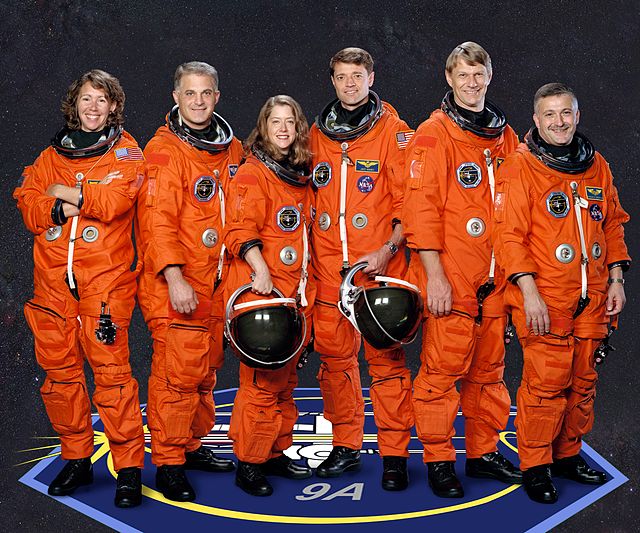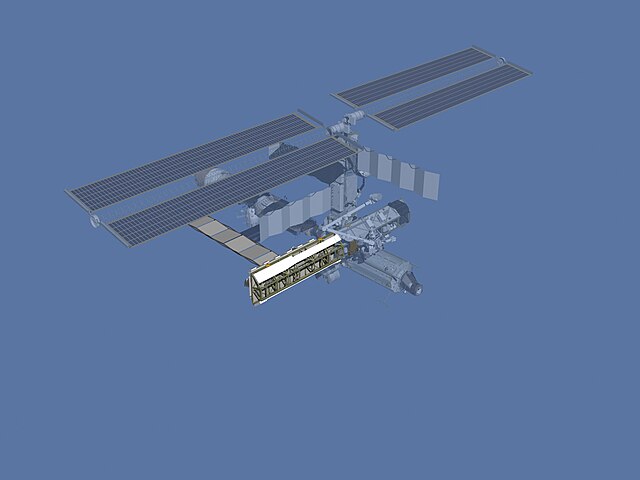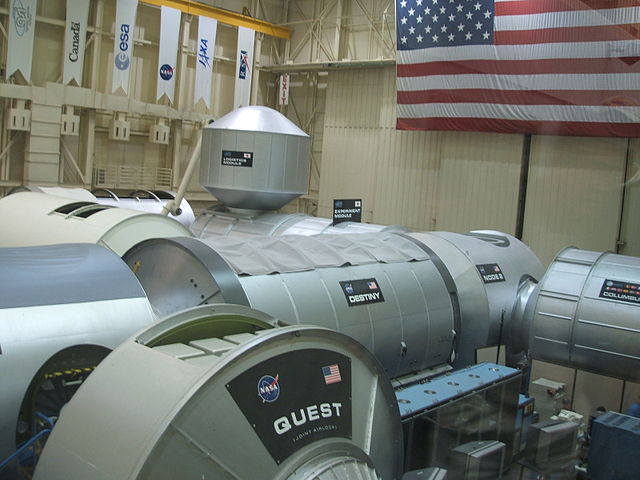STS-112 was an 11-day Space Shuttle mission to the International Space Station (ISS) flown by Space Shuttle Atlantis. Space Shuttle Atlantis was launched on 7 October 2002 at 19:45 UTC from the Kennedy Space Center's launch pad 39B to deliver the 28,000 pound Starboard 1 (S1) truss segment to the Space Station. Ending a 4.5-million-mile journey, Atlantis landed at 15:44 UTC on 18 October 2002 on runway 33 at the Kennedy Space Center's Shuttle Landing Facility.
Canadarm2 takes the S1 truss out of the payload bay of Atlantis, prior to its installation on the ISS
(L-R): Sandra H. Magnus, David A. Wolf, Pamela A. Melroy, Jeffrey S. Ashby, Piers J. Sellers and Fyodor YurchikhinSpace Shuttle program← STS-111STS-113 →
The S1 Radiator panels being manufactured at the Michoud Assembly Facility
Illustration of the International Space Station after STS-112.
Assembly of the International Space Station
The process of assembling the International Space Station (ISS) has been under way since the 1990s. Zarya, the first ISS module, was launched by a Proton rocket on 20 November 1998. The STS-88 Space Shuttle mission followed two weeks after Zarya was launched, bringing Unity, the first of three node modules, and connecting it to Zarya. This bare 2-module core of the ISS remained uncrewed for the next one and a half years, until in July 2000 the Russian module Zvezda was launched by a Proton rocket, allowing a maximum crew of three astronauts or cosmonauts to be on the ISS permanently.
International Space Station mockup at Johnson Space Center in Houston, Texas.
Columbia lifting off on its final mission.
10 March 2001 – The Leonardo Multi-Purpose Logistics Module rests in Space Shuttle Discovery's payload bay during STS-102.
Construction of the International Space Station over New Zealand.








